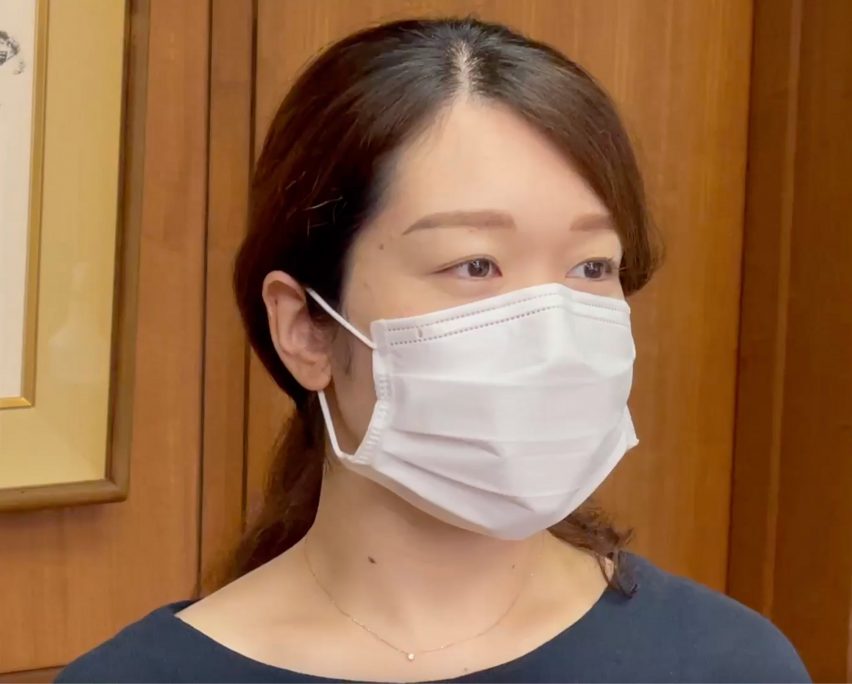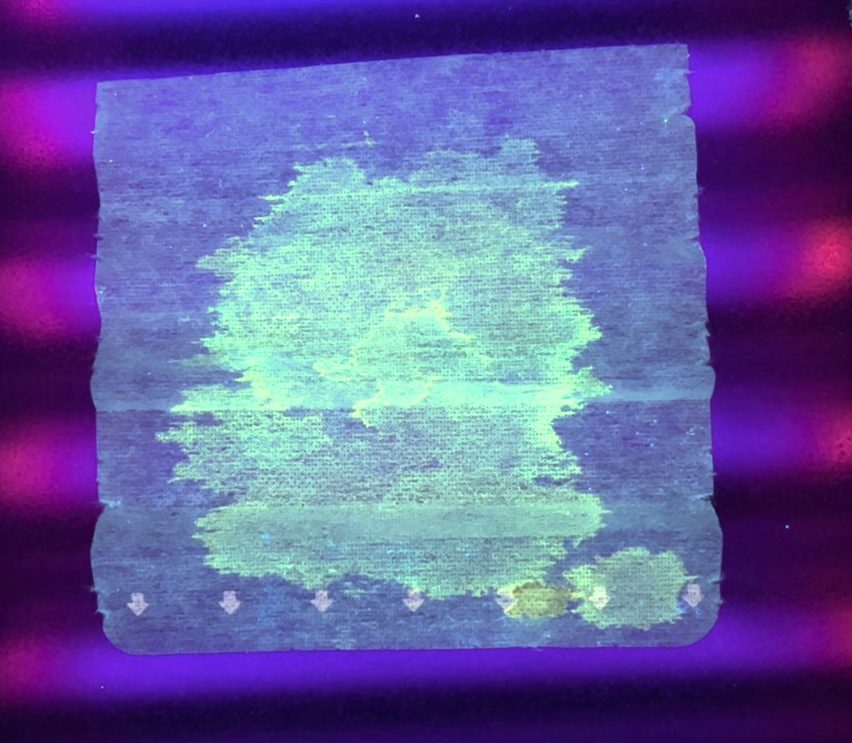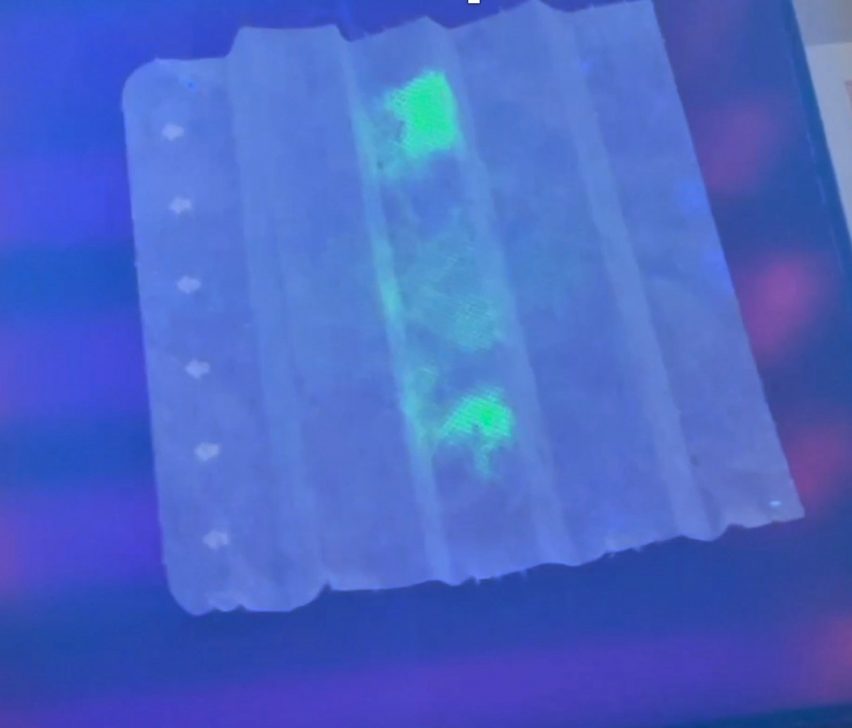Kyoto University creates mask from ostrich cells that glows when coronavirus is detected
Scientists from Kyoto University have developed a face mask made with ostrich antibodies that glows under ultraviolet light when coronavirus is present.
The team of researchers created the mask to help people quickly detect and prevent the spread of coronavirus at a low cost.
A removable filter placed in the mask glows when exposed to coronavirus after being sprayed with a chemical liquid and exposed to ultraviolet lights.
The efficiency of the filter's detection was confirmed in a clinical trial where test subjects wore the masks for eight hours.

Yasuhiro Tsukamoto, leader of the Kyoto University research group, told Dezeen that he came up with the idea after realising that ostrich birds are highly resistant to disease thanks to their strong immune system.
This prompted him to begin researching ostrich antibodies.
"Ostriches rarely die from filth, minor injuries, or illnesses, and live for sixty years," Tsukamoto said.
"I realised that the secret of longevity is that it is resistant to infectious diseases with its amazing immunity and resilience, so I started researching ostrich antibodies in earnest."

To create coronavirus antibodies in the ostrich, the scientists injected the birds with a spike protein of the virus.
They then extracted the ostriches' antibodies from the yolk of the birds' eggs and bound them to the filters in the mask using polylactic acid.
Antibodies in scientific research are most commonly produced from smaller animals, such as rabbits or mice, but these can cost millions of dollars per gram.
By contrast, antibodies taken from ostrich eggs cost less than $1,000 per gram (£736.74,) and can be collected in a short period of about two weeks.
Tsukamoto argues that this makes the masks a more feasible production option, which could help more people detect and prevent coronavirus.
"If virus infection can be detected by putting a mouth filter carrying an ostrich antibody in a 'disposable mask' that is used every day in the world, non-symptomatic infected people such as super spreaders can be voluntarily treated at an early stage," he explained.
"It is a handy and inexpensive device that prevents the invasion of the Covid-19 virus into the human body," he added.
He also hopes that the same technique could be applied to other viruses, such as influenza.

Currently, coronavirus can only be seen on the mask when it is treated with a liquid and put under ultraviolet light. However, the scientists plan to develop masks that glow under the light from a phone.
They have already filed a patent application for the face mask and plan to make them available later on in the year.
Since the start of the pandemic, designers have used science and technology in the race to stem the spread of the virus.
Technology company NS Nanotech developed a range of ultraviolet-emitting chips that could neutralise airborne coronavirus in buildings, vehicles and even outside.
Advanced manufacturing company OPT Industries created a medical swab that aims to improve clinical testing during the coronavirus pandemic. The swabs are able to absorb a higher level of liquid than regular swabs, which provides a higher sample concentration necessary for better diagnostics.
Dezeen is on WeChat!
Click here to read the Chinese version of this article on Dezeen's official WeChat account, where we publish daily architecture and design news and projects in Simplified Chinese.